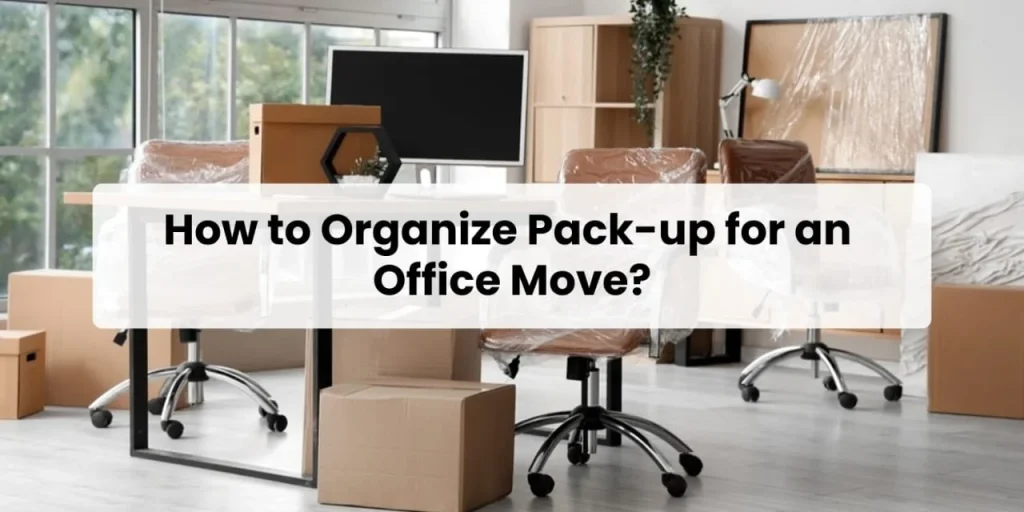Moving an office can be overwhelming especially if it involves many people, equipment and documents. However, with careful planning and organization, you can make the process smooth and hassle-free. This guide will help you understand how to efficiently organize and pack up for an office move, while naturally incorporating helpful tips for finding the right packers and movers.
Step 1: Plan Early
The first step to organizing a successful office move is to plan well in advance. Start by setting a moving date and creating a timeline for all tasks related to the move. This will ensure that you have enough time to pack up and avoid any last-minute stress.
Break the Plan into Phases
Divide your plan into manageable phases:
- Preparation Phase: Choose a date, inform employees and communicate with all stakeholders.
- Packing Phase: Organize teams, designate responsibilities and begin packing.
- Moving Day Phase: Oversee the move, manage logistics and ensure a smooth transition.
By creating a clear timeline, you’ll know exactly what needs to be done at every stage. This will prevent the rush that often leads to mistakes.
Step 2: Hire Professional Packers and Movers
Choosing the right packers and movers is crucial for a smooth office move. A reliable moving company can handle the heavy lifting, ensure that everything is packed securely and transport your items safely to the new location.
Benefits of Hiring Packing and Moving Service
Here are some reasons why you should hire professional packers and movers:
- Efficiency: Professionals can pack and move your office equipment quickly and efficiently.
- Safety: They have experience handling fragile office items such as computers and electronics.
- Time-Saving: By outsourcing the moving process, your team can focus on other important tasks related to the transition.
If your office is based in Chicago, finding experienced professionals such as Chicago packers and movers can be a game-changer. Their local knowledge and expertise will ensure your move is stress-free and on time.
Step 3: Declutter Before Packing
Before you start packing up, take the time to declutter your office space. Moving unnecessary items can be expensive and time-consuming, so it’s best to only pack what you really need. Go through files, equipment and office supplies to decide what can be discarded, recycled or donated.
Declutter Checklist:
- Documents: Shred or recycle old files and papers that are no longer needed.
- Office Furniture: Sell or donate any furniture that won’t be needed in the new space.
- Electronic Equipment: Recycle old or outdated electronics and pack only the necessary ones.
- Supplies: Donate or discard excess office supplies that have been lying unused.
A cleaner, decluttered office means less to pack and more space in your new office for essential items.
Step 4: Organize Packing by Departments
To make packing more organized, divide the tasks by department. Assign each department the responsibility for packing its own space. This will ensure that nothing important is left behind and that each department knows where their items are located once the move is complete.
Departmental Packing Tips:
- Label Boxes: Clearly label all boxes with the department name and contents to make unpacking easier.
- Create an Inventory: Have each department create an inventory of their items so nothing gets lost in transit.
- Pack Personal Belongings Separately: Encourage employees to pack personal items from their desks separately.
By organizing the packing by departments, it becomes much easier to locate and unpack items when you arrive at the new office.
Step 5: Secure Fragile Items
Offices often have fragile equipment like computers, monitors, printers and other electronics that need to be handled with care. Proper packing of these items is essential to prevent damage during the move.
Tips for Packing Fragile Office Items:
- Use Original Packaging: If possible, use the original packaging for computers and other electronics, as they are designed to protect them during transport.
- Bubble Wrap & Padding: Use bubble wrap and packing paper to cushion fragile items.
- Label Fragile Boxes: Clearly mark all boxes containing fragile items with “Fragile” to ensure careful handling by your movers.
Hiring experienced professionals can help ensure that these delicate items are packed securely and transported safely to the new office.
Step 6: Back Up Data and Files
Before the move, make sure to back up all essential data and files. Moving involves disconnecting servers and computers, and there’s always a risk that something might go wrong. Having a backup of your important files ensures that your data is safe even if something gets damaged during the move.
Data Backup Checklist:
- Cloud Backup: Use cloud storage to back up important documents and files.
- External Drives: Backup critical data on external hard drives for extra security.
- Check Backup Procedures: Ensure your IT department double-checks all backups before the move.
By following these steps, you will protect your company’s valuable data and reduce the risk of losing important information during the move.
Step 7: Communicate with Employees
Effective communication is key during an office move. Keep your employees informed about the moving schedule and make sure they know what is expected of them throughout the process. This will help ensure that everyone is on the same page and that the move goes smoothly.
Employee Communication Plan:
- Email Announcements: Send out regular email updates regarding the move.
- Assign Roles: Assign specific tasks to employees to help with packing and organizing.
- Provide Instructions: Give employees clear instructions on how to pack their personal belongings and workstations.
Keeping your employees informed and engaged in the process will make the office move more efficient and less stressful.
Step 8: Final Walkthrough Before Moving Day
Before moving day, conduct a final walkthrough of the office to ensure that everything is packed and ready. Check all rooms, closets and storage areas to make sure nothing has been left behind. This is also a good time to go over the moving plan with your packing and moving service to ensure everyone is clear on the logistics of the move.
Final Walkthrough Checklist:
- Check All Rooms: Inspect every room to ensure that nothing is left behind.
- Review Moving Day Plan: Confirm the moving day plan with your movers.
- Prepare for Unpacking: Ensure that boxes are labeled correctly to make unpacking easier at the new office.
Step 9: Unpack & Set Up the New Office
Once you’ve arrived at the new office, it’s time to unpack and set up. Unpacking can be done in phases, starting with the essential items needed for daily operations. By unpacking gradually, you can avoid chaos and ensure that your new office is organized from the start.
Unpacking Tips:
- Start with Essentials: Unpack essential office items first, such as computers, phones, and workstations.
- Set Up Common Areas: Unpack and organize shared spaces like the kitchen, conference rooms, and reception.
- Delegate Unpacking: Assign different employees or departments to unpack their own boxes.
If you’ve hired Chicago packers and movers, they can assist with unpacking and setting up larger items such as furniture and office equipment, making the process much faster.

